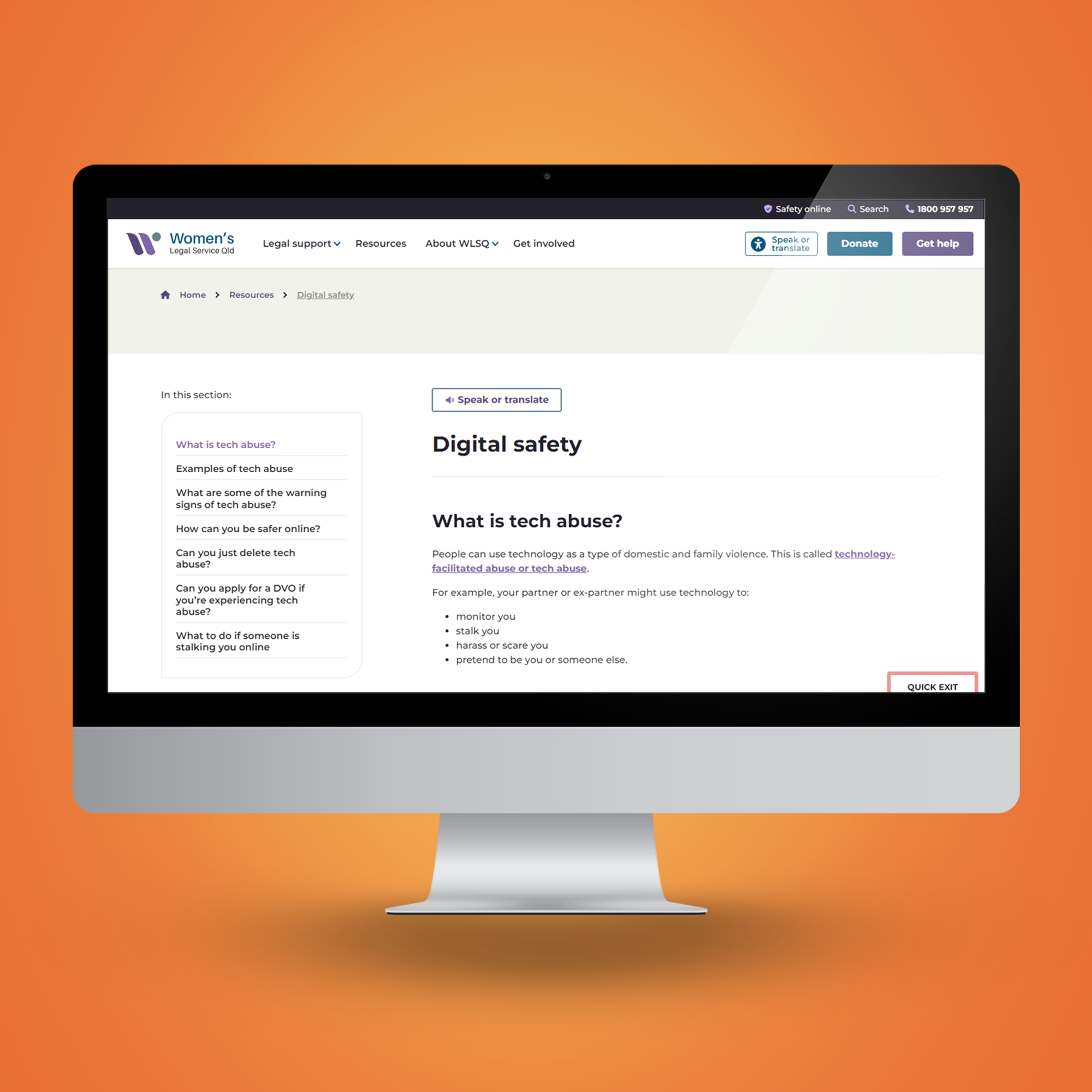Women’s Legal Service Queensland - plain language digital resources

August 2024
We worked with Women’s Legal Service Queensland (WLSQ) to edit a set of online guides for people who are experiencing, or at risk of experiencing, violence or abuse.
WLSQ provides legal support to women in the areas of domestic and family violence, family law, child protection, and sexual assault.
We edited 3 sections of WLSQ’s online resources into plain language:
The aim of the project was to explain each type of violence and abuse in a way that is clear, succinct and sensitive. This included covering a range of topics, such as examples of abuse, warning signs, ways to stay safe, legal processes and how to get support.
Through our editing, we made sure content was well structured, so that readers can find the information they need quickly. We also focused on using everyday language to explain complex processes. For example, one process people experiencing violence or abuse may need to follow is applying for a domestic violence order. We worked closely with the client to agree on the best approach to cover the key information in a clear and straightforward way, while also meeting legal requirements.
Providing these resources in plain language ensures they are accessible to a wider community of people. They also support women to understand their rights in violent or abusive situations.
You can view the full range of resources at the WLSQ website.

Our team of writers, editors and proofreaders are experts at crafting high-quality content that still captures the voice of your organisation. With backgrounds in publishing, marketing, journalism, teaching and linguistics, we are well suited to help any organisation with a diverse range of projects. We have worked extensively with government departments and agencies at federal, state and local levels, as well as with clients in the disability and community sectors.
We are also experts in plain language writing and editing. Plain language, also known as plain English, is a way of presenting information that helps someone understand it the first time they read or hear it.
Using plain language makes good business sense. You’re able to communicate well with your clients and customers and give them what they want – information that is accessible and easy to understand. Readers want an effortless, readable and clear writing style. Plain language is clear language – it is simple and direct, but not simplistic. There are circumstances where complex language is appropriate. However, wherever possible, plain language is preferable.
An example of our work in this area










